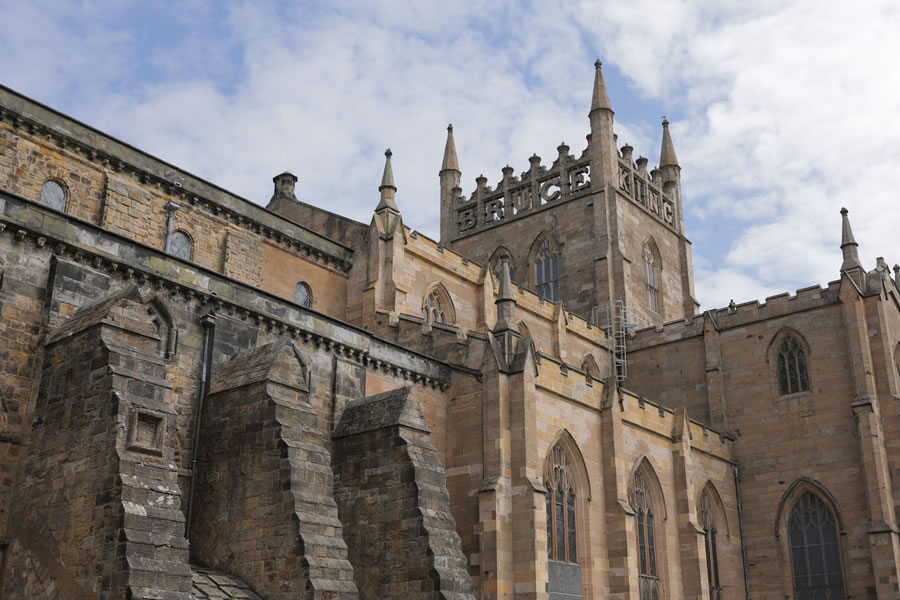Royalty
West Fife’s royal connection

Links to Robert the Bruce
The last king of the Canmore dynasty, Alexander III (1249-1286), died in an accident while travelling through West Fife in 1286, and was buried in the royal mausoleum in Dunfermline Abbey. The relationship between West Fife and the Scottish royal house was renewed during the reign of Robert I (1306-1329) who chose to be buried in Dunfermline importing an elaborate marble tomb from Paris so that on his death in 1329, so that he could be laid to rest alongside the Canmore monarchs. Robert, commonly known as ‘the Bruce’ was the first of a new dynasty, whose claim to the throne was disputed, so his burial in Dunfermline was a deliberate attempt to stress continuity with the past. Members of the Stewart dynasty, who succeeded the Bruces in 1371, could regularly be found in West Fife in the 14th and early 15th centuries, most notably Anabella Drummond, queen of Robert III (1390-1406) who lived in Inverkeithing in the 1390s.
The Royal residence
By the middle of the 15th century however, Dunfermline was no longer the main burial place for the royal house, and Anabella in 1401, and Robert, duke of Albany (1420) were the last Scottish royals to be laid to rest in the Abbey. In the late 16th century, Dunfermline again welcomed the royal family, when it became the personal residence of James VI’s queen, Anne of Denmark. Anne rebuilt the palace and gave birth there to the future Charles I and Elizabeth, Queen of Bohemia (ancestor of the current royals). After James and Anne left for London in 1603, the palace fell into disrepair, and West Fife’s days as an important royal centre were over.
Further Reading
• Donald Omand, (ed) The Fife book (Edinburgh: Birlinn), chapters 5, 6 & 7
• Richard Fawcett, (ed) Royal Dunfermline(Edinburgh, 2005)
5 ways to improve your wellbeing through heritage
Keep Learning at Dunfermline Carnegie Library & Galleries
The museum in Dunfermline Carnegie Library & Galleries has amongst their collection a piece of the garter worn by King Charles I at his execution in 1649 and a cast of the skull of Robert the Bruce taken from the skeleton when his tomb was discovered during the building of Dunfermline Abbey Church. More information on the museum and visiting.
Give at The Abbey Church of Dunfermline
Share your interest in history and heritage as a visitor engagement volunteer in Dunfermline Abbey. There are other volunteering opportunties in this historic site available including, gardening and flower arranging, music, care of buildings, fundraising. Get in touch to find out more.
Connect at Dunfermline Historical Society
The society hosts a programme of talks from September to May, and group visits ranging from day trips to weekend away, in April and June. Meetings are held in the Abbey Church Hall, Abbey Park Place, Dunfermline, on the third Thursday of each month and start at 7:30 pm. More information on the society.
Take Notice at Dunfermline Abbey and Nave
The nave is a surviving remnant from the original medieval church. The Abbey Church built in 1818 is on the site of many royal burials including Robert the Bruce. An exhibition in the church describes the rediscovery of his tomb and shows a recent 3D digital reconstruction based on surviving artefacts. More information on visiting.
Be Active at Malcolm Canmore’s tower
Medieval ruins on the banks of the Tower Burn, traditionally thought to be associated with King Malcolm Canmore and Queen Margaret. The remains of the tower are in Pittencrieff Park, close to the St Catherine’s Wynd entrance. See location https://goo.gl/maps/Jb8iR6qkso8qbBbCA
